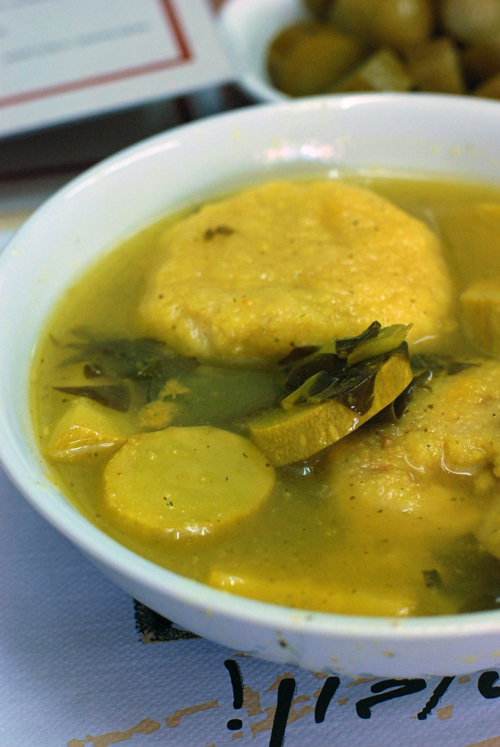Judging by its exterior, Morduch has developed its reputation entirely by word of mouth. The sign outside is small and dirty, and the restaurant is not much more than a hole in the wall, overshadowed in size and grandeur by its neighbor, the shuk (open air market). It’s not the kind of place you notice just walking by; for Morduch to be full as consistently as it is, people must be talking about it. And I can assure you, they are. I actually sat down on the bus the day after I started writing this post, and sure enough, the two women next to me were discussing Morduch.
Morduch serves classic Israeli comfort food: warm hummus with whole chickpeas and ground beef, and kabobs with rice and tomatoes, are both menu staples. But they’re known for their soup — kubbeh soup, in particular.
There are three varieties of kubbeh soup at Morduch. The first is called “marak kubbeh adom,” or red kubbeh soup. It’s a mildly-spiced tomato broth with celery, a couple other vegetables, and big kubbeh, or meat-filled semolina dumplings that have been boiled in the soup. Marak kubbeh adom is generally regarded as the most basic soup; it’s what your friend orders when it’s his first time at the restaurant and he’s still skeptical about the whole kubbeh thing.
The second variety is called marak kubbeh hamusta, and it had me at hello. I first ate kubbeh hamusta in 2004, and was immediately addicted to its mouth-twisting tartness (from sorrel leaves) and rich spicing (from the beef in the kubbeh). There are few things I adore more than hamusta soup.
Given my love of hamusta, I generally don’t look at the menu — I just sit down and order. As I was slurping the last of my bowl last week, I glanced at the menu for blog-reporting purposes and noticed a third soup on the menu: marak kubbeh siskeh. As it’s described by the restaurant, siskeh is hamusta soup for the advanced palate: its spicing is more aggressive, its tartness more pronounced. Basically, an amped up bowl of the already-wonderful hamusta. I had in mind to head back and give it a shot, but there was too much else to do and not enough time, so siskeh will have to wait until my next trip. If you have it, you must let me know how it is!



Comments on this entry are closed.
Both dishes look amazing. I love your description of the soup. I could almost taste that tart flavor from the sorrel; an ingredient I’ve just recently be introduced to, but haven’t yet tried.
Both pictures appear to be of the same dish which I believe was Kube Hammo soup, which is more curry based. he are not Kebe adom , which is red and tomato based, nor Chamusta which is lemony and uses Swiss Chard and Israeli Celery
Do you have a recipe for this? It looks so good! And I won’t be in Jerusalem anytime soon.